One of the greatest cultural adventures on the planet, hiking the Inca Trail to Machu Picchu brings you through the Sacred Valley, past 500-year-old Incan settlements, and across Andean peaks before leading you to the Sun Gate.
There are multiple trails that lace the Sacred Valley and even on-site hiking at Machu Picchu, but the four-day, three-night classic Inca Trail is the only overnight hike that marches you right into the ancient citadel. And if you want to do it in just a day, that’s possible, too.
In this guide, we’ll explore the planning required for a successful Inca Trail through-hike, highlight some equally scenic but lesser-trekked routes in the Sacred Valley, and offer some abbreviated, single-day alternatives.
Choosing your trail
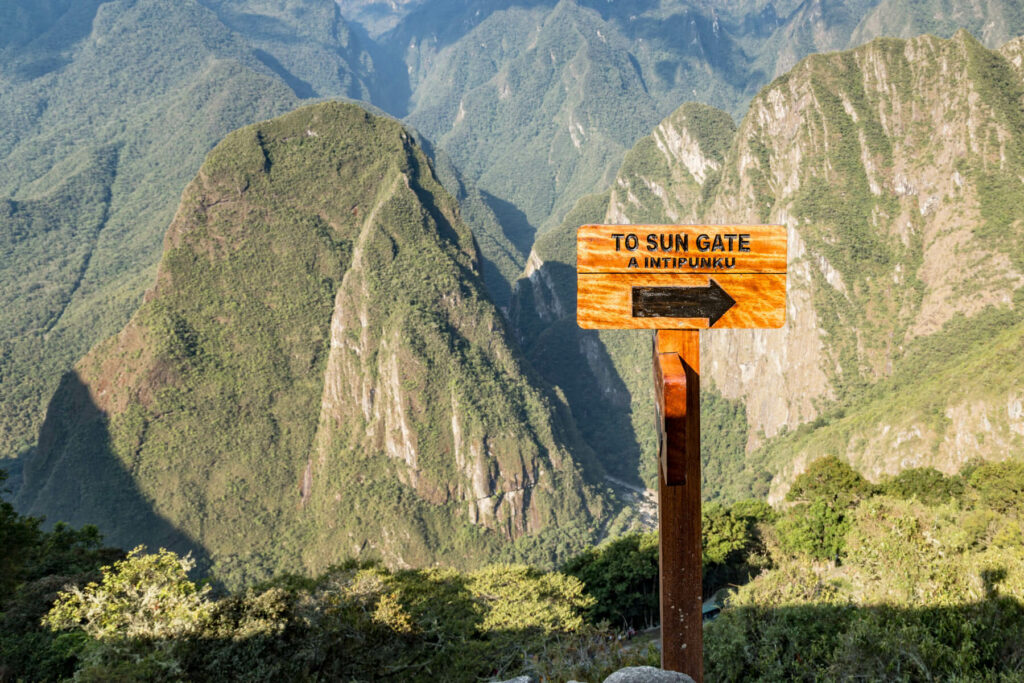
Which trail you choose depends on a few things:
- How long do you want to hike for? (Multi-night, a full day or just a few hours?)
- Are you okay with sleeping in a tent, or do you want to retreat to a lodge each night?
- How important is it that you hike right into Machu Picchu? Is Aguas Calientes close enough?
- Availability of permits: The Inca Trail requires a permit; the Salktantay Trek and Lares Trek do not.
- Do you want the solitude of a backcountry wilderness trek? Or are you okay with sharing the trail with many others?
Classic Inca Trail Route
The 26-mile Classic Inca Trail Route is the most well-known and popularly hiked route to Machu Picchu. On any given day, up to 500 people set out on their memorable hike.
Departing from the “KM 82” trailhead, this adventure will have you cross the Urubamba River and pass through many small villages before ending at Inti Punku, the exquisite Sun Gate. The trek spans four days and three nights, with porters shouldering everything you need with the help of horses and donkeys. You’ll only carry a daypack with water, snacks, layers, and other small gear items.
Expect to hike five to six hours on day one, eight to nine on day two, four to five hours on day three, and two to three hours on day four. The most dramatic elevation gains happen on day two. Each night, you’ll sleep in a comfortable but basic camp. Once you reach Machu Picchu, enjoy a guided tour of the ruins while steeped in a sense of deep accomplishment. From here, freshen up at a luxury jungle lodge near Aguas Calientes or take the train back to Cusco. Alternatively, spend some time exploring the Sacred Valley’s historic sites and heart-racing outdoor adventure.
The “Short” Inca Trail
If you are short on time or don’t want to camp, you can hike part of the Inca Trail to Machu Picchu in one long day by waking at dawn and taking the train to the “KM 104” trailhead. From here, you will hike the last nine miles and arrive through the Sun Gate to the Machu Picchu sanctuary.
Lares Trek
For a culture-heavy, off-the-beaten-path alternative, the Lares Trek is a visually arresting multi-night hike that can be combined with the Machu Picchu “KM 104” day hike.
Known as the “Weaver’s Way,” you’ll depart from the community of Lares, about 40 miles north of Cusco, and spend three days traversing the 20.5-mile scenic trail. Andean peaks, lagoons, and waterfalls are inscribed into the landscape, but it’s the glimpse into pastoral weaving and farming communities that’s truly the beating heart of this experience.
The Lares Trek is rated moderately challenging. Multiple mountain passes sit above 10,000 feet, and there is a demanding switchback traverse over the peak of Pumahuanca.
If doing it as purely a through-hike, you’ll trek for about five hours on day one, eight hours on day two, and four hours on day three. Accommodations are campsites, and you’ll only be required to carry your daypack.
However, for a luxury upgrade, you can tackle parts of the route while retreating to the comfort of a mountain lodge at night. (Hello, warm showers, gourmet meals, and a proper bed!)
The Salkantay Trek
The only Inca through-hike where you have the option of sleeping in a comfortable bed and taking a warm shower at the end of each day is the Salkantay Trek (a.k.a. “the lodge trek”). It’s also the most scenic. Where the Inca Trail is chock full of history, and the Lares Trek is culturally focused, Salktantay immerses you in the splendor of a wilderness that includes both snow-capped peaks and lush cloud forest.
The trail runs through the Cordillera Vilcabamba mountain range. You’ll circle the Humantay Glacier, thread through the Rio Blanco River Valley to reach the breathtaking Salkantay Pass, and visit the turquoise waters of Lake Humantay.
Depending where you start, it’s an approximately 45-mile adventure that can be done in five or six days, but can be condensed into three. Rated moderately challenging, the trail’s highest point reaches to 15,200 feet (but the lodges sit lower, around 12,000 feet.) You’ll hike between four and seven hours a day.
Hiking on-site at Machu Picchu
Once you are inside Machu Picchu, there are two options for a half-day hike, and both offer jaw-dropping bird’s eye views of the ruins. There is Machu Picchu Mountain, the peak seated behind the citadel, which takes three to four hours round-trip and winds along a forested trail to reach the top of the mountain. Huayna Picchu is the nearby peak that towers over the Urubamba River. The Incas carved a steep, narrow trail up the side of the mountain and built temples and terraces on its summit at about 8,920 feet above sea level. This out-and-back hike takes approximately an hour each way, plus the time you spend on the peak. Each trail is limited to 400 hikers per day, and you will need to make a booking in advance.
Obtain proper permits
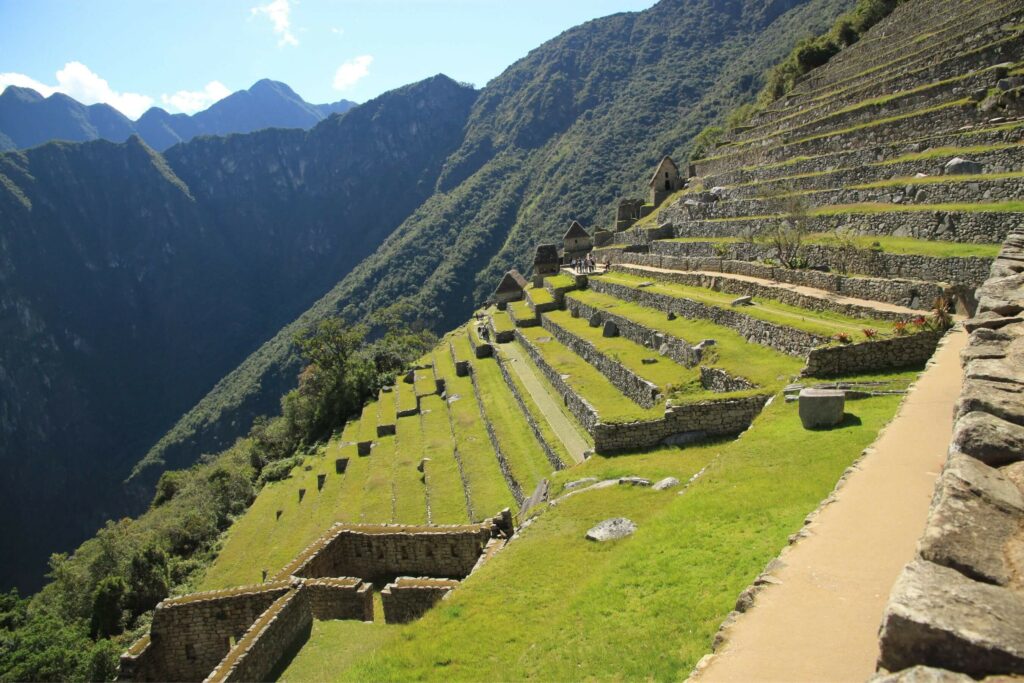
Inca Trail permits sell out fast. The 500-people-on-the-trail daily limit is strictly followed, and the total number of daily permits includes everyone: trekkers, porters, and guides.
Only licensed Inca Trail tour operators can obtain a permit for you from the Peruvian government, and agencies usually book up to 30 spots at a time, meaning permits can sell out immediately on the release date.
Start the process months in advance for the best odds of securing your preferred travel dates. Compared to peak summer months, permits for March and April and September through December are generally easier to secure.
Important note: The Inca Trail closes for the month of February. During this typically wet month, much-needed maintenance is performed.
Get acclimated
Spending time at 8,000 feet above sea level (or higher) is where most people start to feel the effects of altitude. Most treks to Machu Picchu traverse terrain higher than 10,000 feet, so acclimatization is key to a successful—and comfortable—hiking experience.
By far, the best way to temper the effects of altitude is to spend a few laid-back days in Cusco (elevation 11,150 feet). Enjoy the UNESCO-designated city’s cultural highlights and food scene while giving your body time to acclimate. Once on the trail, hike slowly, breathe deeply, and drink much more water than you think you need.
Many hikers also swear by various natural supplements to alleviate altitude sickness, from magnesium to ginko to reishi mushrooms. Those who want to explore the prescription route might ask their doctor about Diamox (also known as Acetazolamide). Just know that one side effect is needing to urinate more than usual, which is not always convenient when hiking a busy trail or while camping.
Peruvians swear by chewing on coca leaves to relieve the effects of altitude. A more diluted way to ingest coca is in tea form. It doesn’t taste like much at all, just a little bitter, so perhaps keep honey sticks on hand to add some taste. Candied ginger is a natural way of combating nausea, and the sugar also gives a tired body a quick boost of energy.
Build your physical fitness
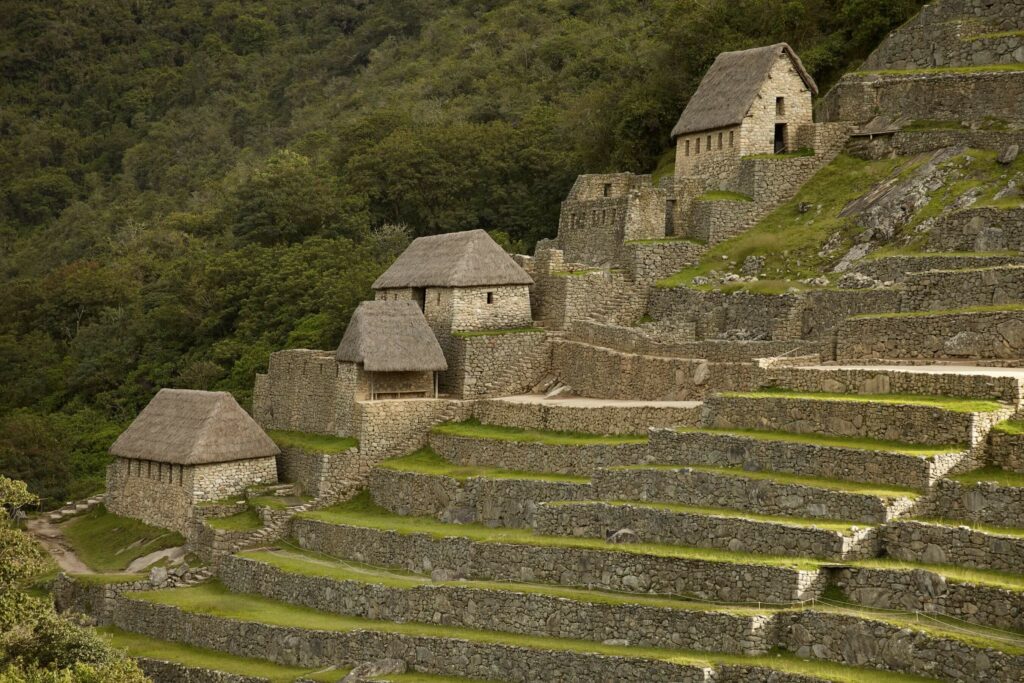
Hiking the Inca Trail, Salkantay Trek, or Lares Trek don’t require an extreme level of fitness, but they’re not for couch potatoes, either. Don’t think that you can get into shape the week before your trip by doing some brisk walking at home.
To prepare your body for this adventure, start at least a few months in advance and focus on cardiovascular exercise. Also, be mindful of mobility in your ankles, knees, and shoulders (you’ll be carrying your daypack all day, every day). Practicing weighted step-ups will make steeper ascents less punishing.
Train in the same boots or hiking shoes you will trek in and while wearing your backpack, loaded up with at least 10 pounds of weight.
Training on a flat treadmill is better than nothing, but know there will be hardly anything flat about your hike. Train on stairs, a Stair Climber, and on uneven terrain to arrive as prepared as possible. Climb hills, too—but not just up; there will be plenty of long descents.
Ultimately, the less time you spend out of breath with trembling muscles and sore ankles means more time joyfully drinking in spectacular Andean views.
Stay hydrated and eat well
As mentioned earlier, drink a lot of water—and then drink more—to hydrate and help alleviate altitude sickness. Add electrolytes for good measure. When you’re walking, you’re guaranteed to sweat, and you need to replace those losses to avoid muscle cramping and brain fog. Moving across varied terrain, you don’t want to roll an ankle because your dehydrated mind is struggling to focus.
As for food, altitude tends to slow digestion. Though you might not feel hungry a lot of the time—or conversely, you may feel nauseous—it doesn’t mean your body doesn’t need more energy. Pack easy snacks in your daypack. Trail mix, candied ginger, and a few Snickers are surprisingly good six hours into the day and tend to go down easily.
Pack light
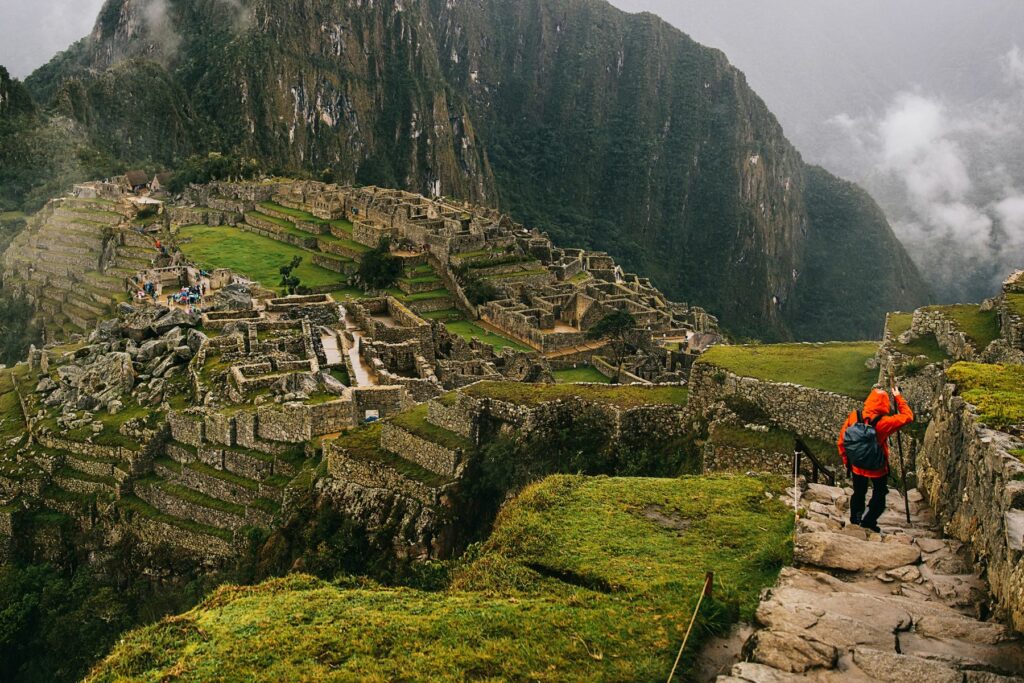
Peru’s government maintains strict control of the trails and the workload placed on porters. With the help of surefooted animals, porters transport camping gear, food, and hikers’ larger bags (which may or may not be provided for you). The guide will weigh your bag to ensure it doesn’t exceed the maximum 17-pound weight limit. You will carry a separate, smaller daypack, which you want to keep under 15 pounds.
Pre-departure, Extraordinary Journeys will provide a complete packing list. Most important, is what’s on your feet. The best hiking boots for Machu Picchu are ones you’ve broken-in well in advance of departure day. Even then, at the end of a long day, nothing feels better than kicking them off, and slipping into lightweight sandals—so bring some along. Also, pack many pairs of socks because they will likely be wet by day’s end. Tip: stash soiled pairs away in a Ziplock bag.
The second most important piece of gear is your daypack. You’ll want a properly fitting pack with a sturdy, adjustable hip belt, and chest strap. Ideally, it doesn’t sit flush against your entire back (look for one with rear ventilation), and you’ll likely want an interior sleeve for a hydration pack. Twenty to 26 liters is an appropriate size. Visit an outdoor retailer where a knowledgeable associate can help select and fit you with the best backpack for hiking Machu Picchu.
Also consider bringing a pair of trekking poles for stretches of the trail that are demanding on the knees. A quality pair of trekking poles don’t weigh much and can easily collapse down and affix to a gear loop.
Other essentials include sunscreen, SPF lip balm (the air at altitude will dry your lips out uncomfortably fast), bug spray (20% DEET or higher), sunglasses, layers of quick-dry clothing, and a waterproof coat.
Leave no trace
The trails leading to Machu Picchu are of great historical and cultural significance and deserve to be treated as such. Examine and photograph, but do not touch structures and artifacts.
Leave rocks, plants, and other natural objects exactly where you find them and pay special mind to accidentally introducing non-native species. For example, don’t throw fruit on the ground that contains seeds. Basically, if you bring it with you, it leaves with you.
Listen to your body
There’s no gold star given if you are the first to make it to camp at the end of the day or if you hike the entire Inca Trail to Machu Picchu without taking Diamox. This is your experience, and you should enjoy it to the fullest while taking the best possible care of yourself. If that means asking for a few extra minutes to catch your breath, then ask.
If at any point you feel that you are straining your body or if you’re feeling the altitude, share your concerns with your guides. They’re highly trained to recognize the signs of altitude sickness and have methods to combat it. Guides are there to help and will have ready access to an oxygen tank. There’s no need to suffer in silence.
Prepare for weather changes
As you gain altitude, temperatures can become unpredictable and extreme. One minute you’re down to a T-shirt layer and sweating, the next, you are racing to put on every layer you brought. A cozy fleece and a rain jacket are just as important as sunscreen and a sunhat. In the morning, you may find yourself hiking in the shade; as the sun arcs across the sky, you will be drenched in sunshine. The sun feels stronger at altitude, too. There are many trekkers who have arrived at Machu Picchu with a terrible sunburn they didn’t anticipate.
Arrive early at Machu Picchu
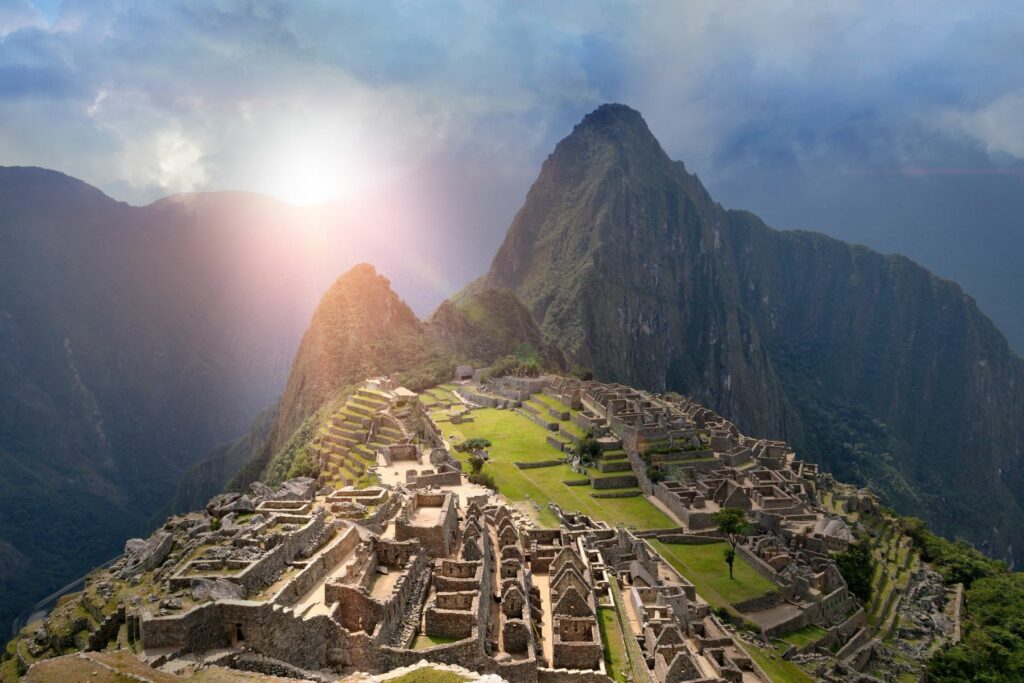
The best reward for putting in the hard work of hiking is arriving at the Sun Gate, also known as Inti Punku. It’s the original entrance and the first glimpse that trekkers get of Machu Picchu. This spot offers a panoramic view of the citadel and the surrounding mountains, with the sun rising from behind. Seeing the morning sun rays shine upon the Inca ruins makes for incredible photography and an unforgettable life moment. On cloudy mornings, a moody veil of mist is just as enchanting.
The earliest Machu Picchu sunrise is at 5:13 a.m. in November, and the latest sunrise is at 6:13 a.m. in July. Because you are in the mountains with no flat horizon, the sun won’t crest until about an hour later.
Respect the regulations
Machu Picchu is one of the most visited tourist hotspots in the world. About two million people visit every year, and tens of thousands of people hike the different trails. The Peruvian government wants to protect the area for future generations.
To aid in its conservation, listen to your guide at all times. Wandering off, whether inside the site or on wilderness trails, not only damages the landscape but could be dangerous. Several paths lead out onto nothing, except a very long drop.
Once inside the sacred site, do not touch the massive, hand-carved stone slabs. Sunscreen, bug spray, and cosmetics can damage the stone surface over time. This is not just helpful advice, it’s legal advice. Tourists found damaging the temples or walls of Machu Picchu may face trial against the Peruvian State.
Enjoy yourself!
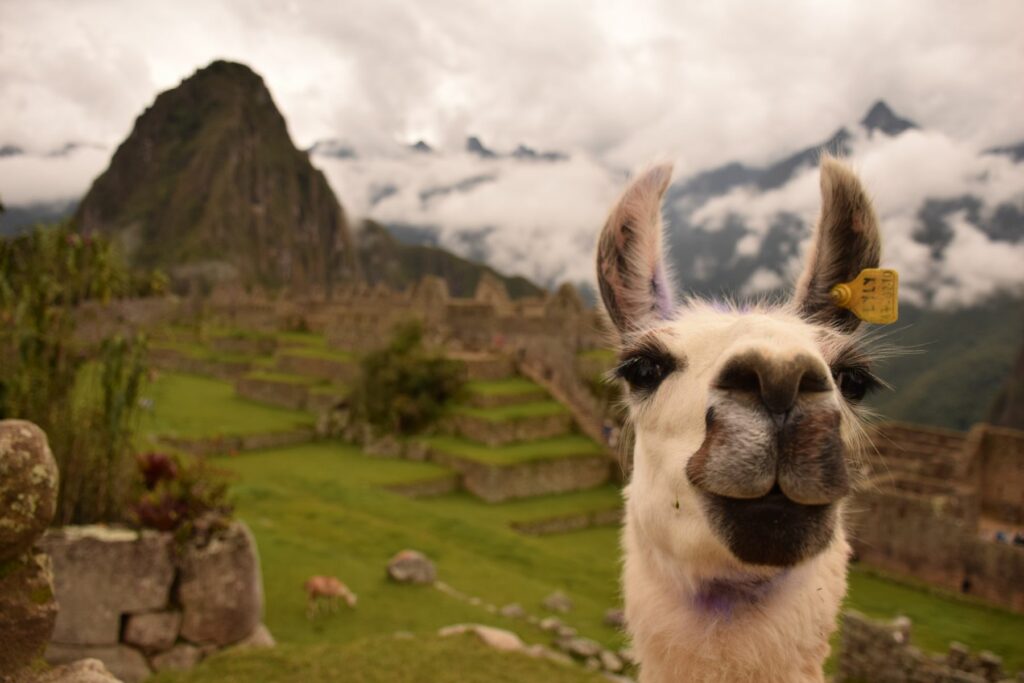
The number one rule (after respecting the trails, archeological ruins, and the locals) is to take it all in. Take extra breaks on the trail when the light is hitting the mountain just right; rock a pair of bright-colored wool gloves emblazoned with an alpaca motif (even if it is the furthest thing from your style); chew coca leaves and giggle when you try—and fail miserably—to spit them out as nonchalantly as your porters.
Hiking the Inca Trail to Machu Picchu is a once-in-a-lifetime experience, so make sure to absorb every moment to the fullest and enjoy yourself as much as possible.
Private & adventurous luxury trips to Peru
Plan your Trip
Ready to start planning your own incredible adventure? We make the process stress-free and enjoyable.
